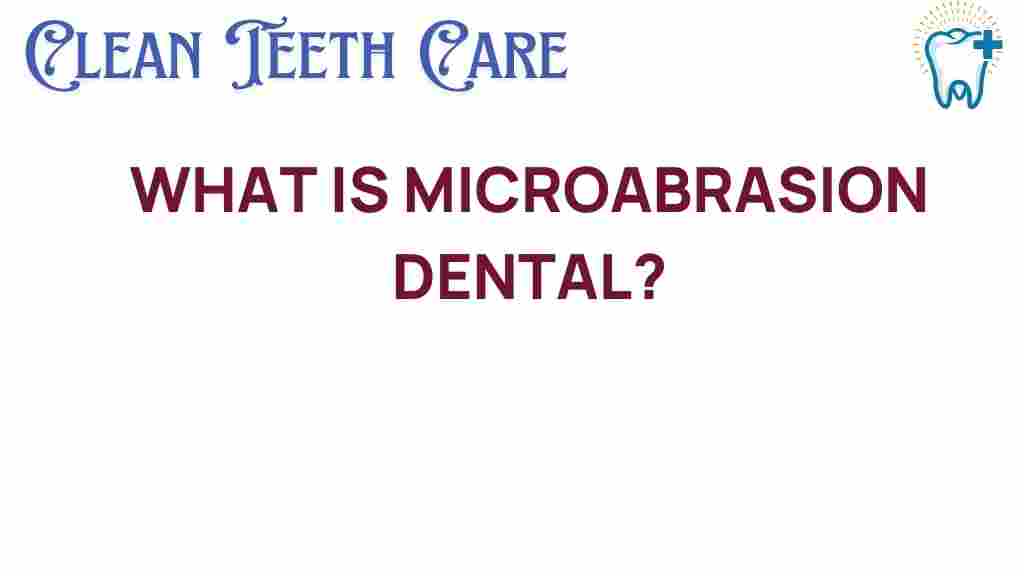Unveiling Microabrasion Dental: The Secret to a Brighter Smile
In the pursuit of a radiant smile, many individuals explore various dental treatments that promise to enhance their oral aesthetics. One such innovative method gaining popularity is microabrasion dental. This technique not only improves the appearance of your teeth but also aligns with the principles of cosmetic dentistry and dental hygiene. In this article, we will delve into microabrasion dental, its benefits, the process involved, and how it can contribute to your overall oral health.
What is Microabrasion Dental?
Microabrasion dental is a cosmetic dental procedure aimed at removing superficial stains and imperfections from the enamel surface of teeth. It utilizes a combination of an abrasive agent and an acidic solution to effectively eliminate discoloration and enhance the natural brightness of your smile. This technique is especially beneficial for individuals who wish to improve their tooth color without undergoing more invasive procedures like veneers or whitening treatments.
Benefits of Microabrasion Dental
- Enhances Tooth Appearance: Microabrasion effectively tackles discoloration caused by factors like diet, tobacco use, or fluoride stains.
- Minimally Invasive: The procedure is less invasive than traditional dental treatments, making it a preferred option for many.
- Safe for Enamel: When performed correctly, microabrasion is safe for tooth enamel and does not significantly erode it.
- Quick Results: Many patients achieve noticeable improvements in just one session.
- Boosts Confidence: A brighter smile can enhance self-esteem and improve social interactions.
Understanding the Microabrasion Dental Process
Now that we have an overview of microabrasion dental and its benefits, let’s dive into the step-by-step process of this effective dental treatment.
Step 1: Consultation
- Evaluate your oral health and dental history.
- Discuss your aesthetic goals and expectations.
- Determine if microabrasion is suitable for you based on your dental condition.
Step 2: Preparation
Once you decide to proceed with the treatment, your dentist will prepare your teeth for microabrasion:
- Your teeth will be cleaned thoroughly to remove any plaque or debris.
- A protective barrier may be placed on your gums to prevent irritation.
Step 3: Application of Abrasive Agent
Next, the dentist applies a specialized abrasive paste, often containing aluminum oxide crystals, to the surface of your teeth. This paste is gently polished onto the enamel to remove stains.
Step 4: Acidic Solution Application
Following the application of the abrasive paste, an acidic solution is applied. This solution helps to further lift stains and smooth the enamel surface. This dual-action process effectively revitalizes your teeth.
Step 5: Rinsing and Polishing
After the treatment, your teeth will be rinsed thoroughly. The dentist may then polish your teeth to ensure a smooth finish and enhance their shine.
Step 6: Post-treatment Care
Finally, your dentist will provide you with guidelines for post-treatment care, which may include:
- Using a gentle toothpaste for sensitive teeth.
- Avoiding certain foods and beverages that may stain your teeth.
- Maintaining good dental hygiene practices.
Troubleshooting Common Concerns
While microabrasion dental is a safe and effective procedure, some patients may have concerns or experience minor issues. Here are some common concerns and how to address them:
1. Sensitivity
Some individuals may experience temporary tooth sensitivity following the procedure. This is usually mild and can be managed by using toothpaste designed for sensitive teeth.
2. Uneven Results
If you notice uneven whitening or areas that still appear discolored, consult your dentist. They may recommend a follow-up treatment or alternative whitening methods.
3. Discomfort During Treatment
If you feel any discomfort during the procedure, inform your dentist immediately. They can adjust the technique or provide additional comfort measures.
Maintaining Results and Enamel Care
To ensure long-lasting results from your microabrasion dental treatment, it’s crucial to maintain a good routine of enamel care and dental hygiene:
- Brush Twice Daily: Use a soft-bristled toothbrush and fluoride toothpaste to protect your enamel.
- Floss Daily: Regular flossing helps prevent plaque buildup between your teeth.
- Limit Staining Foods: Reduce consumption of coffee, red wine, and other foods that can stain your teeth.
- Regular Dental Check-ups: Schedule biannual visits to your dentist for professional cleanings and evaluations.
Alternative Teeth Whitening Options
While microabrasion dental is an effective option for many, there are also several alternative teeth whitening methods you might consider:
- Whitening Toothpaste: These products contain mild abrasives and whitening agents.
- Over-the-Counter Whitening Kits: These kits typically include strips or gels to apply at home.
- In-Office Whitening Treatments: Dentists offer professional whitening procedures that can deliver immediate results.
- Veneers: For a more comprehensive smile enhancement, dental veneers can cover discolored teeth.
For more information on various teeth whitening options, you can visit this link.
Conclusion
In summary, microabrasion dental presents an innovative solution for individuals seeking to enhance their smiles. This effective dental treatment is not only safe and minimally invasive but also provides quick results that can significantly boost your confidence. With proper dental hygiene and enamel care, the results of microabrasion can be long-lasting, contributing to your overall oral health. If you’re considering this treatment, consult with a qualified dentist to determine if it aligns with your smile goals and dental needs.
Start your journey towards a brighter smile today! For additional resources on enhancing your smile through cosmetic dentistry, check out this informative article.
This article is in the category Treatments and created by CleanTeethCare Team
